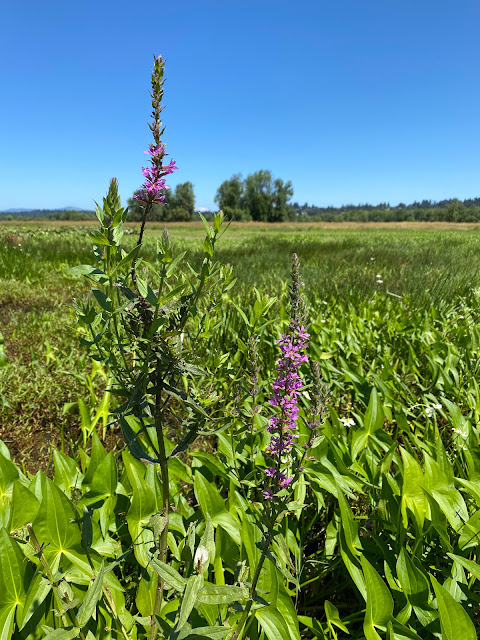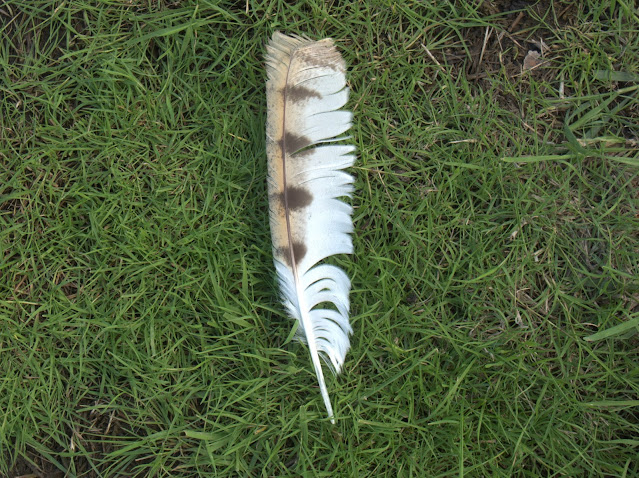June 15, 2021 - Invasive Season has Arrived!
May and June are very busy months for our Habitat Restoration Team. Why you ask?
Many invasive plant species begin to make themselves more easily identifiable by coming into flower as the temperatures warm. As a result, invasive species surveys and mapping take the forefront at this time of the year. While many of these plants may appear beautiful and innocent, they can be very detrimental to ecosystem health if not properly managed.
What makes a plant invasive?
According to the US Forest Service, an invasive plant species is defined as any non-native plant whose introduction causes, or is likely to cause, economic/environmental harm, or harm to human health. Many invasive plant species thrive in disturbed soils and produce very large quantities of seeds which makes them that much harder to eradicate once they begin to produce flowers. Most invasive plants will begin to outcompete native species if left unchecked.
While we could never hope to entirely eradicate all of the invasive plants that exist on refuge lands, our habitat team works diligently to gain and maintain control of them to prevent further spread. While herbicide treatments are utilized for the particularly nasty/noxious species, we also implement mechanical removal of the plants when we can (and when it makes sense). Below are just a handful of the common invasive plants that you might run into while at Ridgefield NWR.
 |
While driving home from work a few weeks ago, I spotted this very cute Yellow Warbler perched on a Himalayan Blackberry plant. While the plant does provide edible fruit for both humans and wildlife, it does not provide ideal habitat for the native wildlife that call this refuge home. This species spreads very aggressively, and will overtake entire ecosystems if left alone. Our habitat team utilizes a combination of mechanical and chemical control (herbicide) to regain control of areas that have been infested. It can take many years of herbicide treatments and brush cutting to kill off just a small patch of this species. On that note, please do not eat the berries that grow on refuge lands! Odds are, that plant has been sprayed with herbicide at some point and they are not fit for human consumption. Furthermore, picking any plant on Refuge lands is against the rules, and could potentially be a detriment to wildlife habitat and food sources. |
 |
Here we have a Tansy Ragwort plant that I found while patrolling the auto tour route. Tansy Ragwort is toxic and can be a threat to the grazing cattle that are kept on certain areas of the refuge. As a biennial plant (2 year biological life cycle), Tansy Ragwort spends it's first year in a rosette stage with dark green leaves that look similar to kale. During the second year, one or more flowering stems form leading up to the yellow flowers that top the plant. This invasive is a very common in areas of disturbance, roadsides, and pastures, and I would argue that this is one of the more common invasive plants across the Refuge Complex. |
 |
Yellow Flag Iris is an invasive ornamental plant that is becoming a major problem on Bachelor Island. It is aquatic, and can grow up to 3 feet tall in shallow water. This plant is also toxic to livestock if ingested, and contact with plant resins can cause skin irritation in humans. The plant above was spotted off the auto tour route, along with one other plant relatively close by. It is important that we treat these plants each season with herbicide to prevent further spread. Mechanical removal is not ideal because plant fragments can form new plants if they break off and drift into suitable habitat. |
 |
Above we have a rather large Bull Thistle plant that has grown near the auto tour route. Bull thistle may outcompete native plants and desirable forage plants for native wildlife. It is common in disturbed habitats, and will grow in dense patches. Growing up to 7 feet tall with one upright branched stem that forms a bright purple flower. |
 |
This plant goes by the name Poison Hemlock and is one of the more dangerous plants that exists on Refuge lands. The entire plant is toxic to animals and humans with alkaloids that affect the nervous system. If ingested this plant could kill you, and even touching the plant can cause a severe skin reaction in some people. The plant can reach up to 12 feet tall, but can look very similar to wild carrot (also known as Queen Ann's Lace) in its younger stages. The easiest way to identify poison hemlock plants is to look for purple splotches along the stem - if it's purple steer clear! |
 |
This particular invasive goes by the common name - Ricefield Bulrush. This weed is a global problem, and has documented resistance to herbicide making it very difficult to control. On top of its resistance to certain herbicides, it is a vigorous reproducer - with the ability to reproduce through either seeds, rhizomes, or stolons! Due to it's aquatic nature, seeds can spread rapidly through water channels and infect large areas in a very short amount of time. It does not provide ideal habitat or sustenance for our native wildlife, and can outcompete native species rapidly. Our habitat team hosts volunteer work parties for the search and removal of this particular species. For a refresher on how we approach the control of this species - read 2020 blog posts A Final Bulrush Sweep & Bulrush Monitoring in Wetland #6. |


Comments
Post a Comment